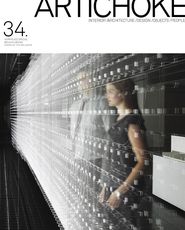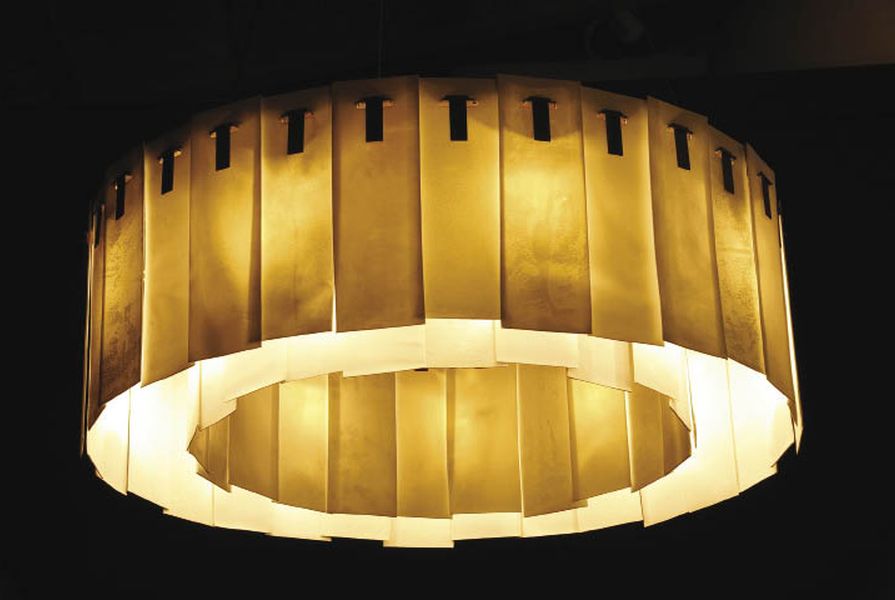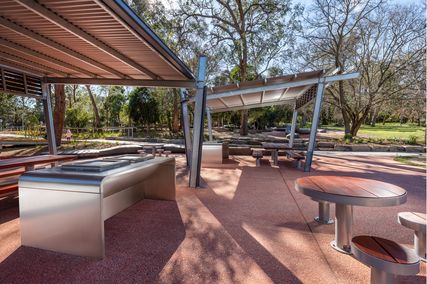Eclectic. Organic. Thought provoking. These are a few of the words you might use to describe Mance Design’s unique lighting creations. The same words could be used to describe the company itself. Dean Gaylor and Christopher Boutsinis, co-directors of Mance Design, met in high school. They both went on to study industrial design at Swinburne National School of Design and, in a twist of fate, they both began work at the Melbourne studio of well-known lighting designer Geoffrey Mance.
Custom Chandelier for Husk Carlton.
Image: Ben Collinson
Mance’s works included the original uplighting of the plane trees lining Melbourne’s Collins Street; the lighting of the Fitzroy Gardens; and hundreds of private residences, hotels and fine dining restaurants throughout Australia. Sadly, Geoffrey Mance fell ill and passed away in 2007. The reins of the business were passed to Gaylor and Boutsinis. “Geoffrey’s wish was that the studio continued with the same elements of experimentation and joy that he had fostered,” says Boutsinis. “We bought the designs and the intellectual property of Geoff’s business from his family, and installed this into our own business model, now known as Mance Design, obviously in honour of Geoff.”
Inspired by their mentor and their collaborations with sculptors, artists and industrial designers, Boutsinis and Gaylor have gone on to establish Mance Design as an innovative design studio seeking to create truly lasting pieces. “We set ourselves extremely high standards with our work. We understand that our designs may outlive us, and therefore there is an understanding that nothing short of exceptional can leave the studio,” says Gaylor. The search for quality and originality means that Mance Design works hard to create lights that elevate and alter the clients’ space. “A luminaire design should work well as a design piece or artwork when not illuminated,” says Gaylor. “And when the light is illuminated, we can become very excited about how it will work and shape the space, whether by the projection of shadows or the refraction of light. We like to see our design provoke a reaction.”
One of the best examples of this is the Hedgehog. One of Mance Design’s most recognized pieces, each chaotic sphere is made with hawthorn hedge and copper, then flocked in a chosen colour. “It is a very sculptural process to make the Hedgehog, which you can see in the end result,” says Gaylor. “You know immediately that someone has put their soul into the making of this light.”
The copper long light installed in a private Melbourne residence.
Image: John Howland
Working together with artisans is one of the great pleasures for Gaylor and Boutsinis. “Collaborating with various artisans extends the range dramatically and adds multiple dimensions to many of Mance’s works,” says Boutsinis. For instance, the studio recently collaborated with an artist to create a large installation of Ping chandeliers in a five-star hotel complex in Delhi, India. “We wanted to achieve a very hand-crafted aesthetic for this design,” says Gaylor. “So even though the framework is laser cut, we have manipulated it by creating a rusted finish which results in a beautiful, aged finish that contrasts nicely with the porcelain tiles, made by a local ceramicist.”
With their work installed in the US, UK and throughout Asia, and a raft of projects on their slate, the co-directors of Mance Design are pretty relaxed about the future. “We simply want people to respect our work, while we continue to enjoy creating it,” says Gaylor. Boutsinis agrees, “If we can continue to produce designs that are unique for their application and use of materials, whilst merging art and design, then I think we are on the right path.”
Source

People
Published online: 10 Oct 2011
Words:
Deborah Niski
Images:
Ben Collinson,
Dean Gaylor,
John Howland,
Julian Ehrhardt,
Rhiannon Slatter
Issue
Artichoke, March 2011






















